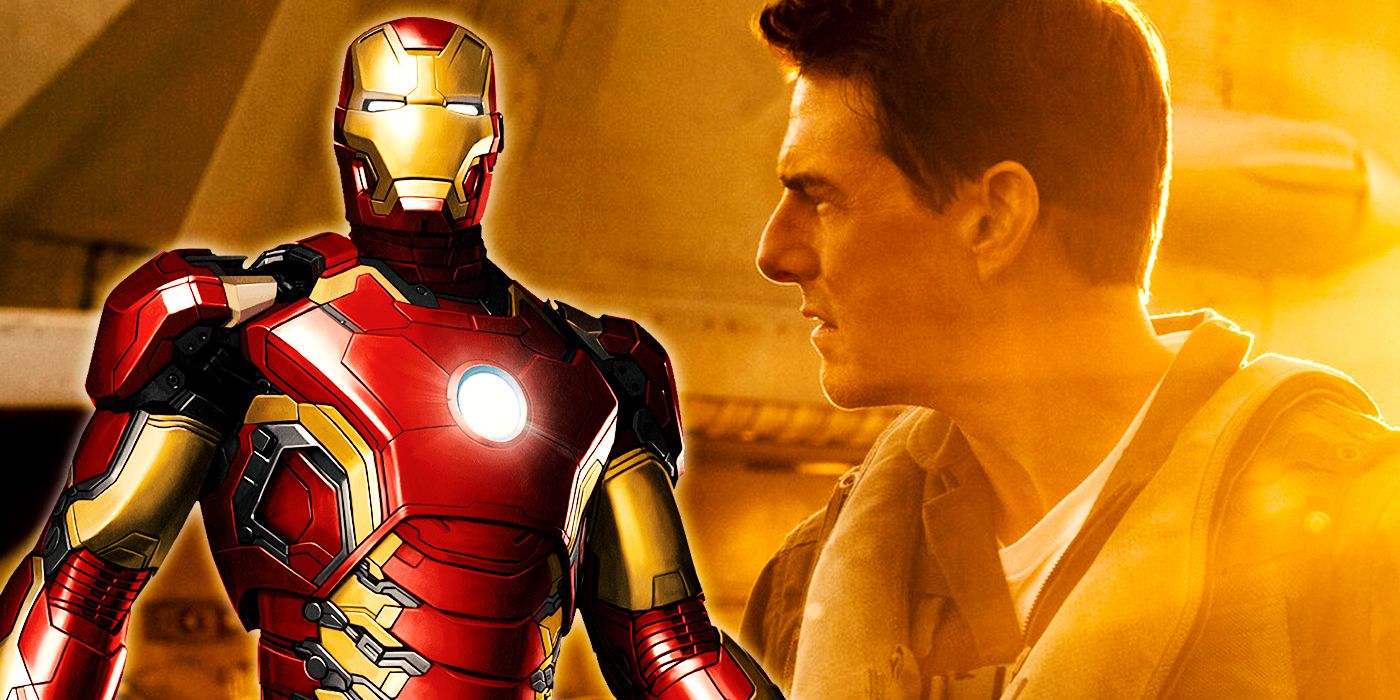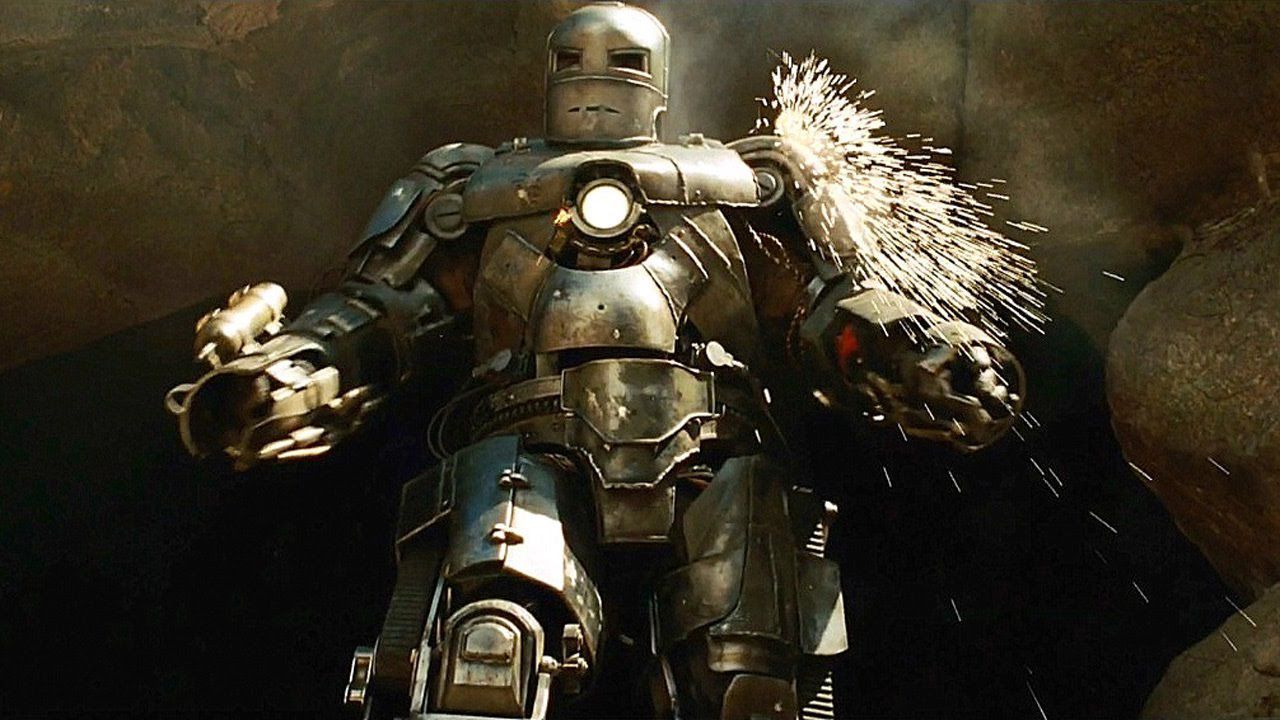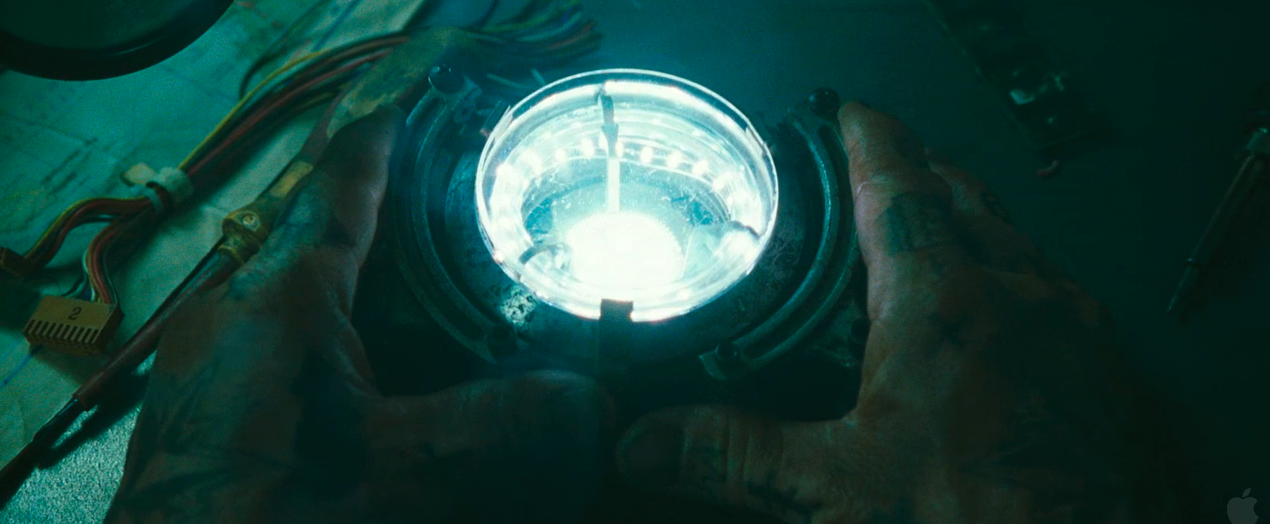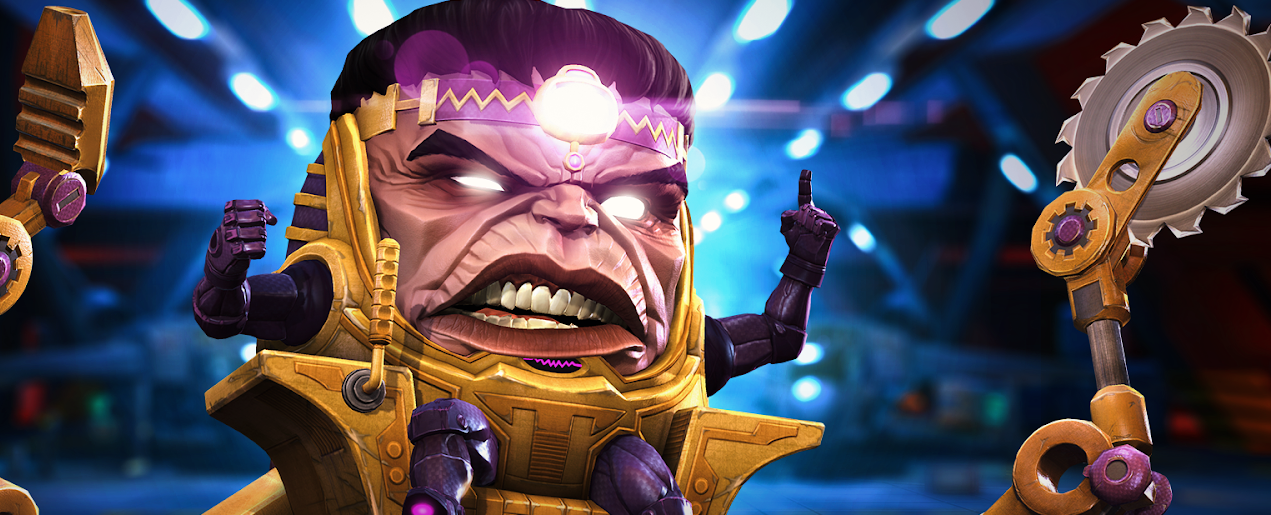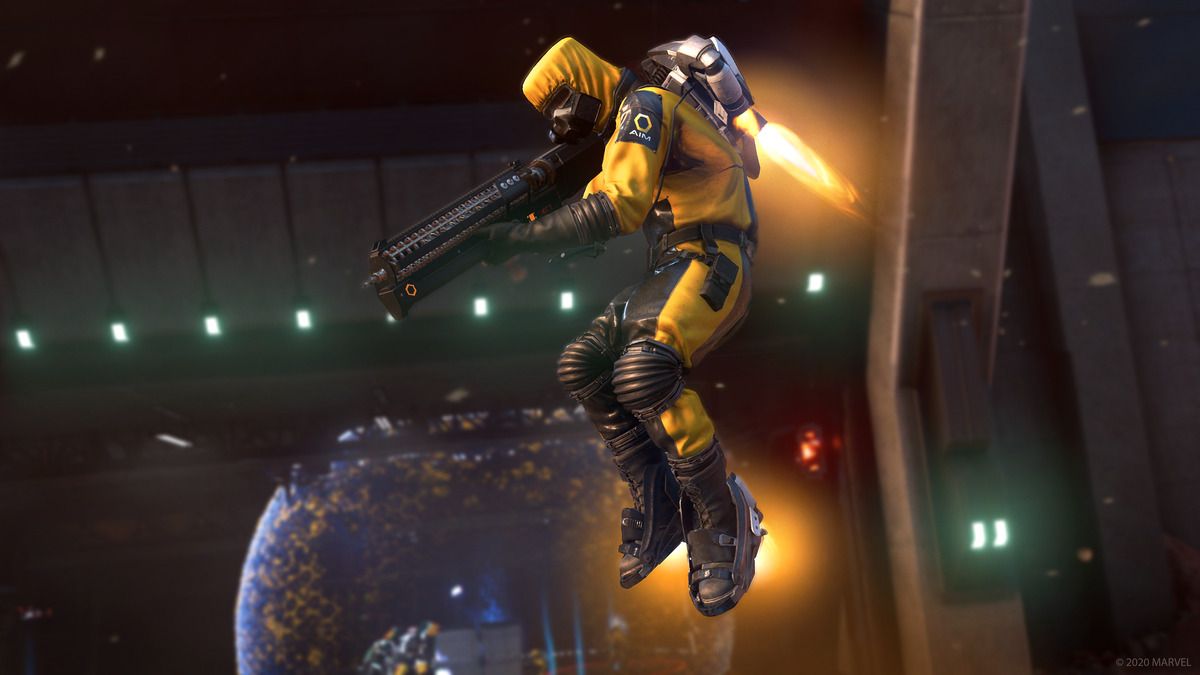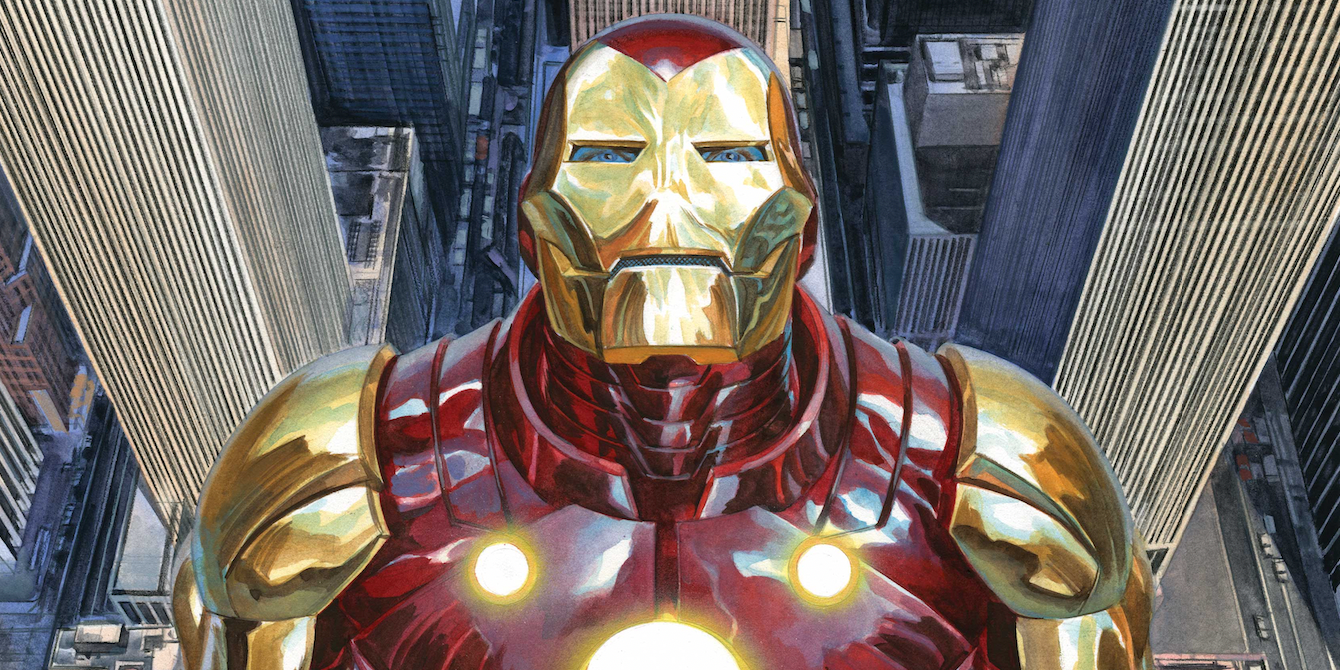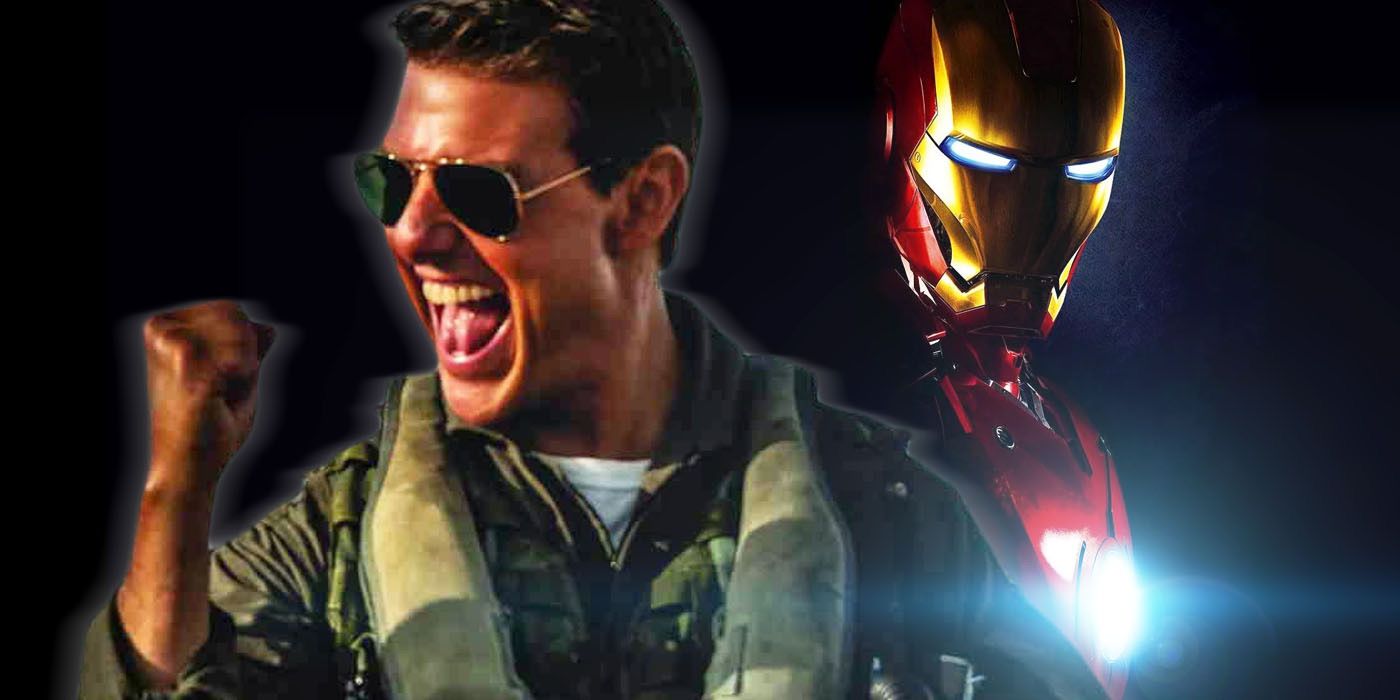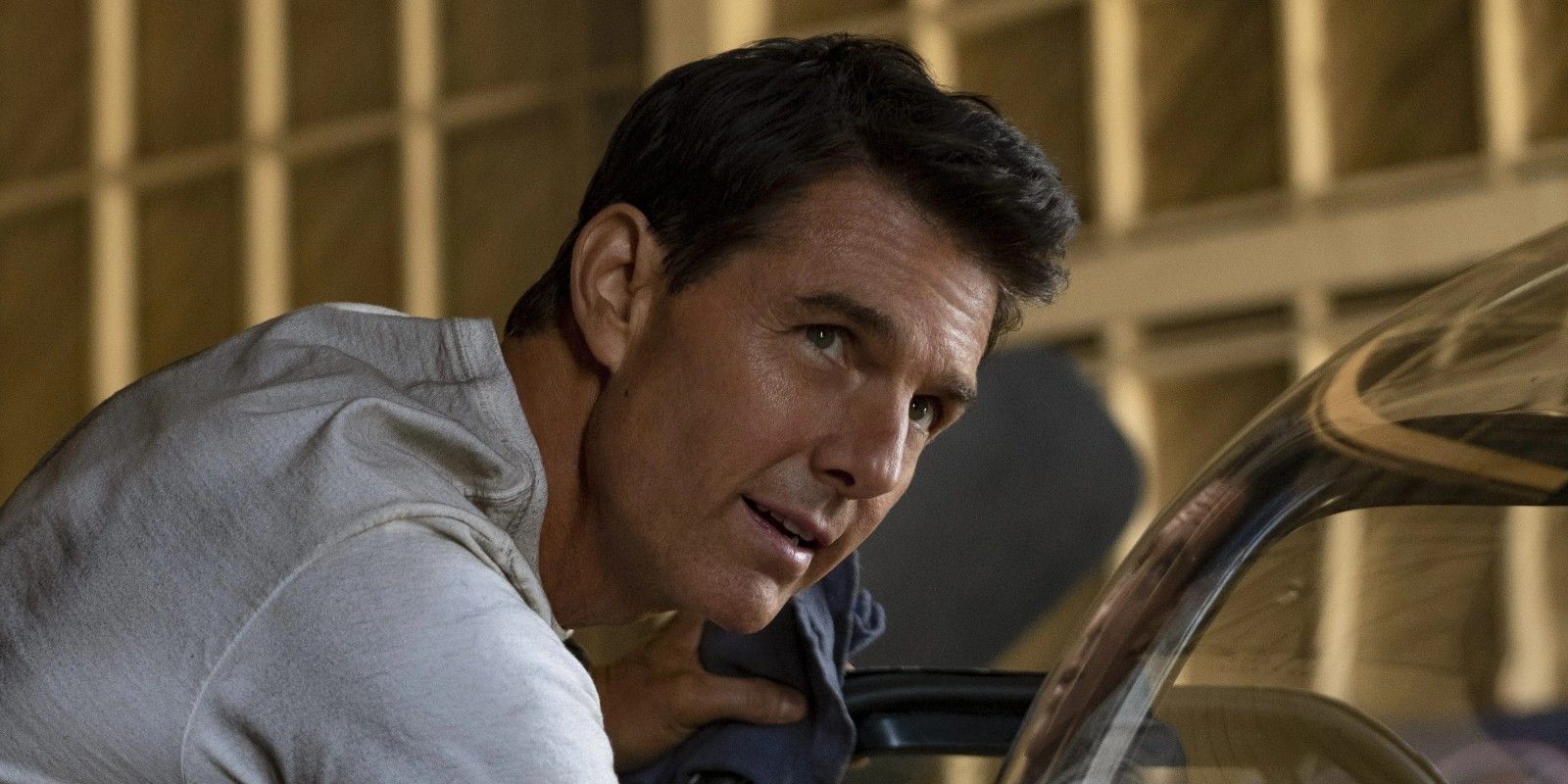Welcome to the 21st installment of Page One Rewrite, where I examine comics-to-screen adaptations that just couldn't make it. This week, a 1997 attempt at an Iron Man film, from the writer of I, Robot and none other than Stan Lee.
The context of 1997 is worth noting, as Marvel had yet to release a hit film, and the only bankable superhero, Batman, had seen his franchise descend into camp with the under-performing Batman & Robin. And it's not as if Iron Man was viewed as a marquee hero in the world of comics, either. With the constant expansion of X-Men spinoffs and Image Comics' new generation of aggressively stylized superheroes, traditional Marvel titles like Iron Man struggled in the market.
After a failed attempt to reignite interest by replacing Tony Stark with a teenaged, time-displaced version of himself, Iron Man's title underwent two relaunches in just over a year. The 1997 relaunch featured a new armor designed by famed illustrator Alex Ross and stories from fan-favorite writer Kurt Busiek. Eyes were back on the hero, but it's obvious Marvel had to take drastic steps to attract attention.
A New Origin for a New Millennium
Dated July 1997, "The Iron Man" has a story credit from Jeff Vintar and Stan Lee, with the final screenplay penned by Vintar. Fox was developing the film simultaneously with X-Men, Fantastic Four, and Daredevil, thinking that the technology-based Iron Man would be one of the easier superheroes to bring to the screen. (Assuming there was even much public demand for these movies, something Fox executive Tom Rothman reportedly doubted.)
Nicolas Cage expressed interest in the role, but the screenplay reads like it was written with Tom Cruise in mind. The Iron Man letter column was upfront about Marvel's desire to have Cruise in the role, with perhaps his then-wife Nicole Kidman joining him as Pepper Potts.
The Tony Stark we meet at the script's opening is quite familiar. He's a Cold War-era weapons manufacturer, looking now at the end of the 1990s and questioning how to move forward after the global collapse of communism. His new project is the Rescue Redeemer Armor, a clunky suit that can retrieve and house people during emergencies and offer medical care. Given a much calmer global environment, Stark doesn't see the need to design the Redeemer for military purposes, even though his investors are convinced the technology is worth far more as a mobile battle suit.
Oddly, global events would enable the eventual 2008 Iron Man film to stick far closer to the comic's 1960s origins. Communism in Southeast Asia was no longer an American concern. Still, following the 9-11 attacks and subsequent War on Terror, it made sense for 2008's Tony Stark to be introduced as an in-demand weapons manufacturer, showcasing his latest goods "on location." 1997 held a far more optimistic outlook on the future.
Despite the "Redeemer" name, Stark doesn't necessarily feel guilty over his past as a weapons manufacturer. This predates The Ultimates, yet another attempt by Marvel to "modernize" their classic characters, that presented Stark as an unsympathetic playboy before the incident that transformed him into Iron Man. This Tony Stark is inherently noble. He could justify manufacturing weapons within a certain context, and now with that threat over, he's willing to move on and do something else.
Shot Through the Heart
Stark Industries vice president Jeremy Bland pushes the hardest for the Redeemer's militarization and, in his pursuit of power, sides with rival technologies firm Advanced Idea Mechanics to overthrow Tony. AIM assaults a Stark Industries event with its cyborg flunkies, as an assassin targets Stark with an experimental "smart bullet" that snakes through the party and pierces his heart. Stark's life is saved by one of his prototype Redeemers, but he delays leaving for the hospital. Stark instead stays and aids those threatened by the cyborgs. His decision to delay medical care leaves the bullet lodged near his heart, forcing him to wear a metallic chest plate that keeps him alive.
Stark keeps his condition a secret and, in an homage to the classic comics, claims the person within that Redeemer armor was his bodyguard. The press dubs the hero "The Iron Man." Stark's yet to don any cool metallic suits, though. Suspicious of Bland, Stark spies on his VP, which soon brings him into contact with AIM. In a sequence that feels inspired by Mission Impossible's "sneak past the laser grid" scene, Stark's suspended by a cable, zipping up and down while navigating his way through AIM's ventilation ducts.
While slinking around AIM's corporate headquarters, Stark is caught and narrowly escapes with his life. (Bloody, he enters a taxi owned by the "Excelsior Cab Company," driven by an older gentleman in sunglasses. Shocking, yes, that something co-written by Stan Lee would include a Stan Lee cameo.) The incident inspires Tony to create the true Iron Man armor and bring down AIM. The text emphasizes this is more mechanical than superheroic; Iron Man is truly a "flying machine."
(Somewhat) Comics Accurate
Behind AIM's corporate veneer, in an area of their building hidden through holographic displays, is an army of technicians in "yellow hooded lab suits, their faces only suggested behind the grills of their hoods." Their leader is teased for much of the script as a voice on a screen, one with a Cobra Commander lisp. Eventually, he's revealed as MODOK, floating above the floor in an armored hovering chair designed to support his gigantic head. Vintar elaborates, "his shriveled legs hang uselessly above the floor. His head must be six-feet from top to bottom and at least four-feet-wide from ear to ear. His proportions are similar to a baby's…warped to terrifying effect."
As exciting as it would've been to see comics-accurate AIM "beekeepers" and a floating MODOK, their cyborg flunkies carry some puzzling names. Whiplash has at least some connection to his comic roots, though this version instead shoots eerie filaments from his hand instead of brandishing a whip. The rest of AIM's cyborgs have less defensible monikers.
Jigsaw is a contortionist skilled enough to fit inside a small box, who also moves like a spider thanks to his inhuman joints. Chameleon is a shapeshifter whose true face is constructed of tiny needles. Vision can remove his eyeballs, which act independently of his body and broadcast images back to his brain. There's also Human Bomb -- not Nitro, the Human Bomb, but instead a cyborg who literally carries around a bomb in his stomach.
It's obvious these aren't meant to be the recognizable figures from the comics, but instead, new cyborg creations that carry names Marvel assumed it had the rights to use. (Yet a handwritten note on this copy has "can't be used" next to Vision's name.) Honestly, the casual appropriation of established names might be the only aspect that would annoy diehard fans. The script reads as a respectful adaptation of Iron Man, including nods to fans like the suitcase that carries the armor, and in one sequence, the roller skates even make a brief appearance.
They're Not So Different, Naturally
While testing the new Iron Man armor, Stark stumbles across a robbery and soon becomes a public sensation. Apparently, the goodwill generated by Stark Industries' new corporate mascot eases investor fears over Stark's No New Weapons stance. However, MODOK manages to hack his way into Iron Man's armor at a public event, forcing his repulsor blast to murder an innocent banker who had the dumb luck of asking him for a photograph. (This may or may not be a nod towards a similar moment in the "Demon in a Bottle" story arc from David Michelinie and Bob Layton.)
MODOK pipes into the armor's visual sensors an amusingly surreal infomercial for AIM, explaining the group's origins. Since the Industrial Revolution, they've worked in secret for the betterment of mankind. AIM's goal is a peaceful, clean world united under their benevolent corporate leadership, where human and machine live as one, ending false distinctions between the natural and artificial.
AIM attributes 20th-century technological advances to continual warfare, now in jeopardy. The Redeemer armor will accelerate the collapse of nation-states and social constructs. MODOK remotely gives Stark the "we're not so different, you and I" villain speech, inviting him to join AIM, which is, of course, rejected.
Iron Man struggles against MODOK's control and is quickly pursued by police. Soon, Bland is named Stark Industry's new CEO, while Stark is on the lam. Simultaneously, AIM raids his secret lab, and they retrieve the latest ultra-high-tech Iron Man armor.
In his lowest moment, Stark turns to Pepper Potts for help. She's the only board member supportive of his move away from weapons manufacturing and happened to be in his office earlier when his chest plate needed recharging, making her the only person aware of his health issues.
Pepper doesn't have much to do in the story, but she works well enough as a love interest and surprisingly never becomes a damsel in distress. At her suburban home, Pepper uses her beat-up Volkswagen van to charge up the malfunctioning Iron Man armor and save Stark's life. He reveals his identity to her, they share a kiss, and soon she's back at the offices as Bland makes his first speech as CEO. Pepper plants tiny devices nearby that cause Bland to rip open like a Swiss army knife. He collapses, revealed to the public as a freaky cyborg.
Tony, meanwhile, waltzes into AIM's headquarters in a business suit. When confronted by MODOK and an army of AIM technicians, he again refuses their offer to join. Declaring Tony Stark died when the bullet hit, he is now "the Iron Man," Stark opens his chest plate to reveal the electric circuits and metal parts embedded in his skin. He's a gruesome man-machine, physically no different from AIM's cronies, but hasn't lost his humanity.
The big twist is that Tony wanted MODOK to steal the shiny, advanced armor. Tony raises his arms, and the experimental armor, in pieces, flies towards him and assembles around his body. The last of the cyborg flunkies is killed when Whiplash is accidentally decapitated by his own filaments, while Iron Man merely punches out MODOK, who's left for the police.
A speech from Pepper Potts assures us that things will soon be back to normal at Stark Industries. The final shot has Tony alone in his lab. In a voiceover, Stark declares he knows he'll die wearing this iron chest one day. But not today.
Did We Dodge an Experimental Smart Bullet?
"The Iron Man" is quite entertaining -- perhaps the best superhero script of this era. The line between superhero adventure and modern techno-thriller is balanced remarkably well, giving Stark numerous gadgets to use outside his armor while navigating his way out of some outrageous set pieces. Naturally, if you are attempting to court Tom Cruise, you don't want to give him scene after scene where he's hiding behind a metallic face mask, but these sequences are entertaining in their own right. (And the script is sure to point out the camera will cut to Stark's face within the armor during the dramatic moments, something seen in the eventual Iron Man films.)
Today, it's a novelty to read an Iron Man origin story that has him motivated more by chivalry than guilt or trauma. At the time of this screenplay, Kurt Busiek was coincidentally doing press for his upcoming stint on the Iron Man comic book, indicating his view of Tony Stark as a modern-day "knight in shining armor." Traditionally, Tony Stark isn't emotionally damaged or developmentally stunted -- he's a decent person who feels obligated to help others. That aspect of the character is dramatized remarkably well here and is never boring.
For fans, it would've been awesome to see the comics' absurd and visually cool elements brought to the screen. Were movie audiences of 1997 ready for MODOK? Are they today? Well, why not try? The script does a nice job presenting the bizarre matter-of-factly, avoiding any camp and doing what it can to bring the audience into this world. There's no attempt to shovel jokes into every moment, and the humor usually feels natural. (You can't get too mad when an emotional MODOK dries his tears with a handkerchief the size of a beach towel.)
The film would've required a large budget, but everything in the script was conceivable by the late 1990s. Witnessing the various cyborg stunts performed with practical effects would've been a highlight of the era, right up there with Independence Day's exploding White House. This easily could've been promoted as Robocop meets Mission Impossible, and it's hard to imagine it wouldn't have been a hit.
The script's largest flaw is how underdeveloped Tony's life feels. Jarvis and Happy Hogan are absent, as is James Rhodes. His secretary remains unnamed when she could've easily been called Mrs. Arbogast. While Vintar's screenplay is more imaginative than the 2008 film, director Jon Favreau did a great job casting the "civilian" parts and fleshing out a life for Tony. This reads far more as a star vehicle than an ensemble piece.
Ultimately, Fox didn't pursue the expensive project, and the rights went to New Line, which also squandered the property. Finally, Marvel regained the rights, invested its own money, and the most successful film franchise in history was born. And Tom Cruise and Nicole Kidman, meanwhile, just had to settle for working with Stanley Kubrick on his final film.

